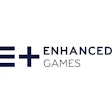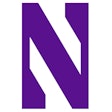Remember Ed O'Bannon, the former UCLA basketball player who filed suit against the NCAA more than four years ago, alleging it was profiting off of O’Bannon and other NCAA athletes’ likenesses found in EA Sports video games? After a long and winding road, a federal judge has okayed the class-action suit to go to trial, setting a start date of June 9.
While it is still possible a settlement between the NCAA and the plaintiffs will be reached prior to the start of the trial, the outcome of the lawsuit could have drastic consequences for the NCAA, college athletic conferences and television networks. At the heart of the lawsuit is the NCAA rule that prohibits student-athletes from profiting off of the use of their name, likeness or image.
"We're not asking for any money to be paid," said Michael Hausfeld, attorney for the plaintiffs, during a summary judgment hearing on Thursday. "We are asking for the restraint to be removed ... and then the market will determine how it plays out."
In January 2013, the lawsuit expanded to allow current athletes to join, as well as target other entities profiting off of athletes’ likenesses, including conferences and television networks. The plaintiffs are in the process of working out settlement details in their suit against EA Sports.
Thursday’s hearing took into account various arguments by both sides, including the NCAA’s assertion that the First Amendment protected it from requiring athletes’ permission to broadcast their appearances at games. U.S. District Judge Claudia Wilken also called into question whether the NCAA’s no-pay rule violated antitrust laws.
"Up to this point you always heard the NCAA argue that these restraints are lawful -- purportedly," Hausfeld said. "We're done with that. There's no presumptions. This court is saying if we go to trial, you're going to have to prove that."
Should a jury rule in favor of the plaintiffs, the results could bankrupt the NCAA, though a lengthy appeals process would first ensue. A less drastic outcome could result in concessions from both sides, with restrictions on athletes’ ability to profit from their likenesses removed or lessened, or schools agreeing to set aside a portion of revenues for athletes.





































